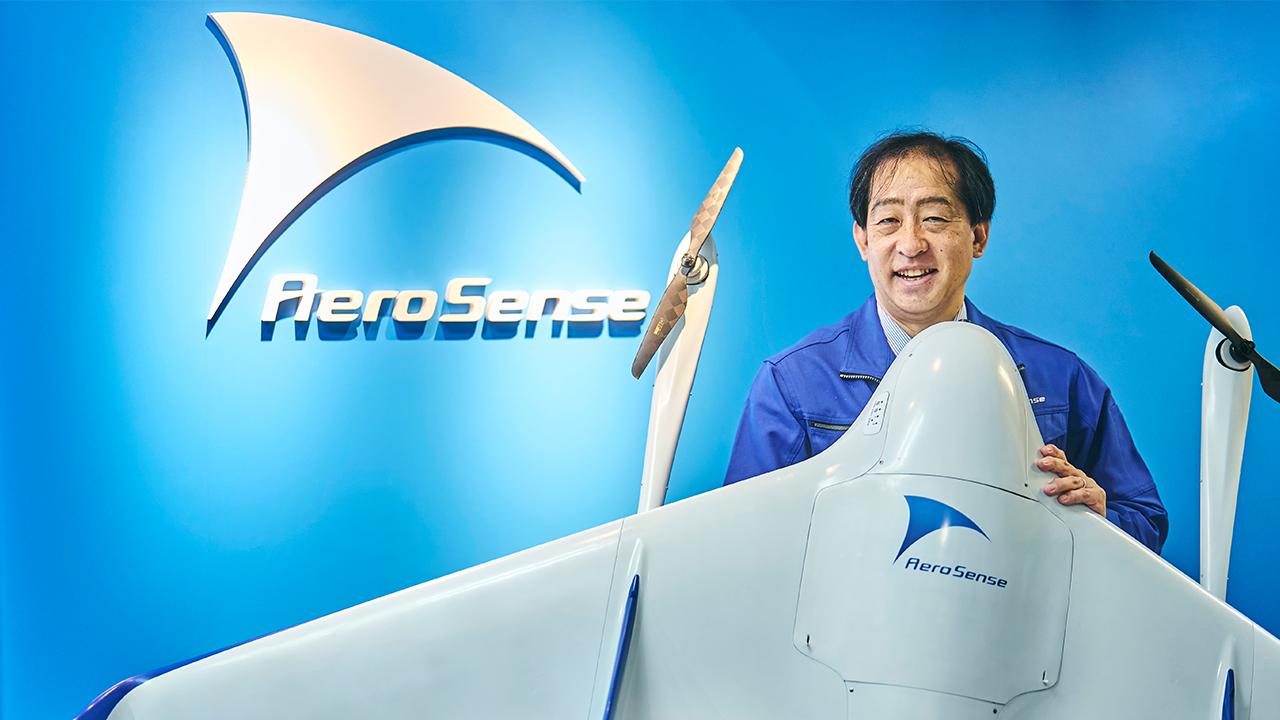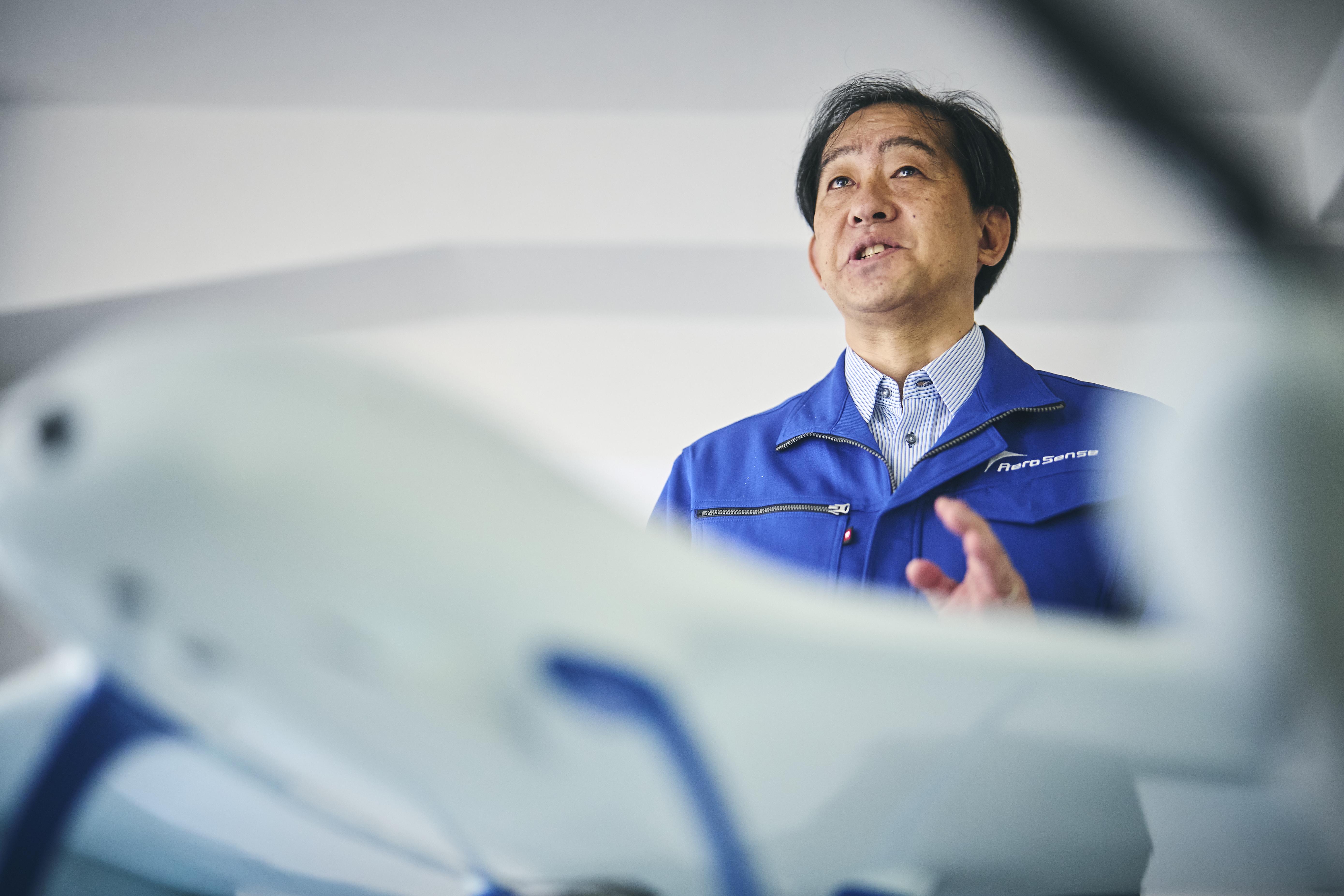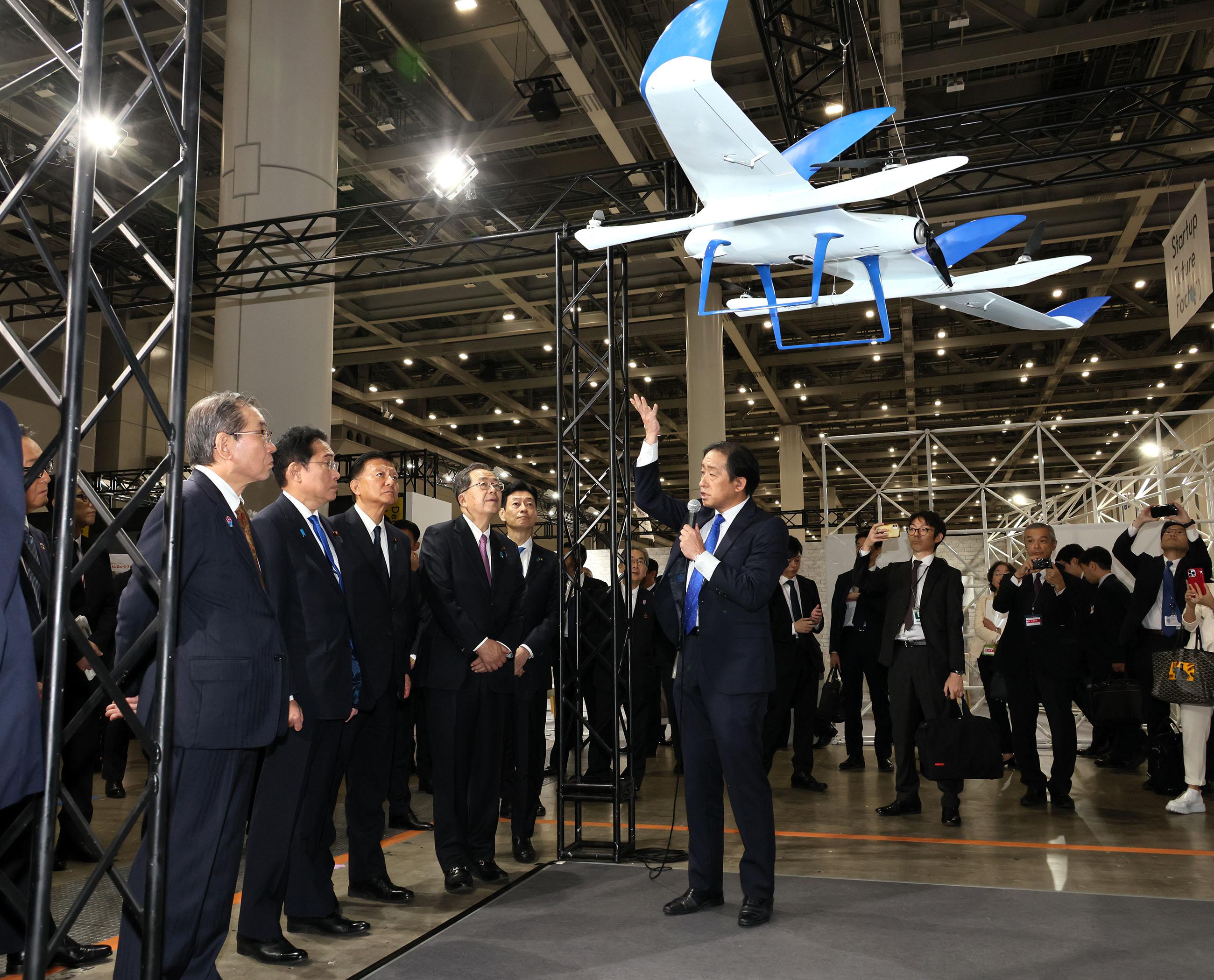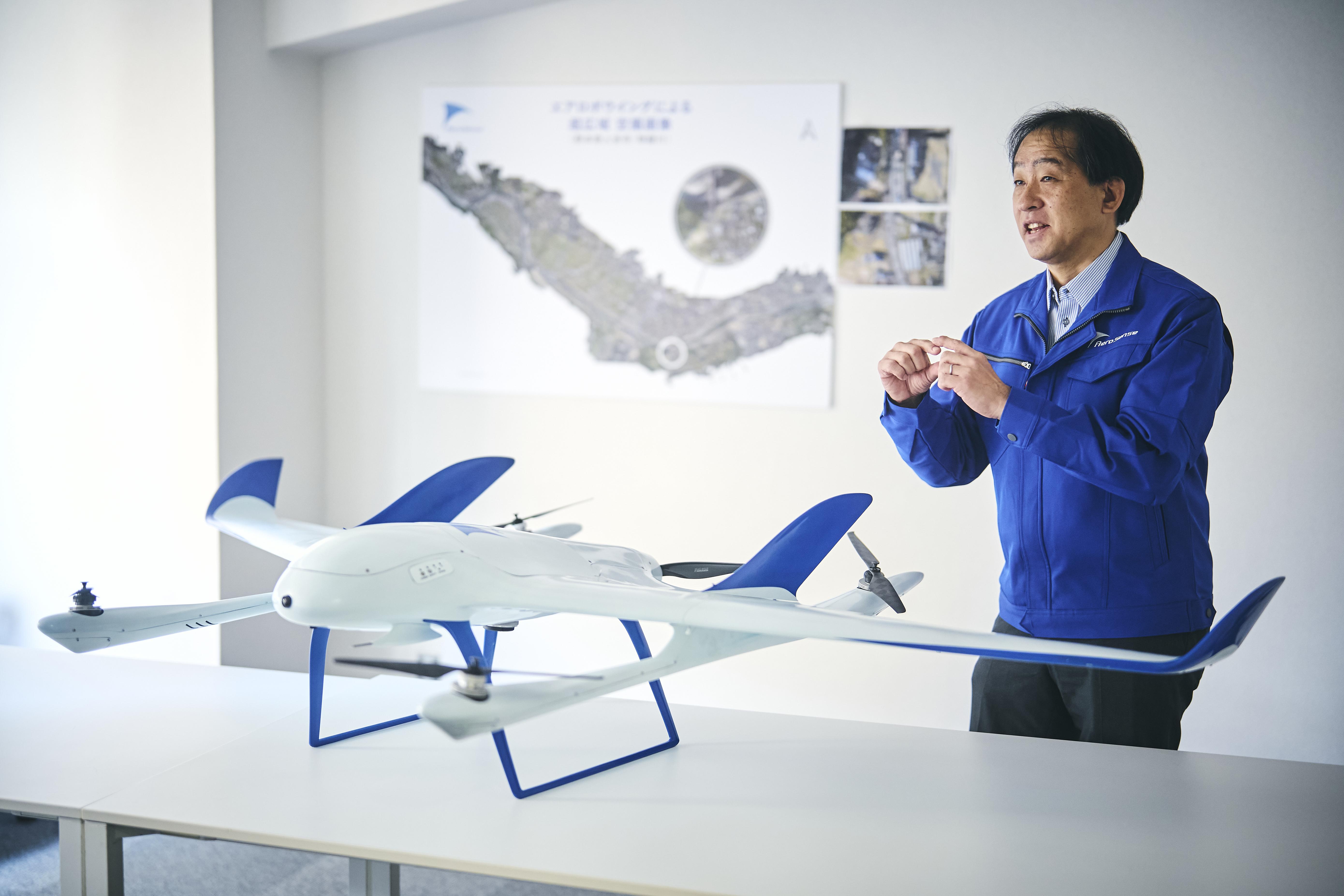
Partners in Future Mobility profiles innovative startups that participated in the Japan Mobility Show 2023. Our fourth article showcases AeroSense, a company that is developing industrial drones.

Held for the first time last fall, the Japan Mobility Show renamed and redefined the Tokyo Motor Show as a platform where various mobility-related companies from the auto industry—and beyond—come together to create the country’s future.
This series profiles innovative startups that participated in the Japan Mobility Show 2023. What does mobility mean to those like-minded partners also working to create the future, and what visions lie behind their endeavors? We delve into the stories that emerge from the Japan Mobility Show and the possibilities they offer for the future of mobility.
VTOL drones that fly longer, further, faster
AeroSense is both a developer of industrial drones and a provider of cloud-based data processing services. The company is known for launching Japan’s first fixed-wing vertical take-off and landing (VTOL) drone, Aerobo Wing, in 2020. When talking about drones, people generally think of rotary-wing aircraft with many propellers, but the Aerobo Wing is a fixed-rotary hybrid that flies using the same principles as airplanes.
“A feature of VTOLs is that the rotors enable vertical take-off and landing, and after gaining lift and speed, they can use the fixed wings to fly horizontally, like an airplane,” explains Kohtaro Sabe, the company’s president and CEO. “This makes them energy efficient and capable of flying faster over long distances.”
When conducting land surveys, a typical rotary-wing drone can stay aloft for about 30 minutes, covering a few hectares. By comparison, the Aerobo Wing VTOL has a flight time of around 40 minutes, during which it can survey several hundred hectares.

“Broadly speaking, rotary-wing drones are the domain of electronics manufacturers and can be flown by electronically controlling the speeds of the motors. On the other hand, fixed-wing models are designed like airplanes, requiring mechanical expertise. Our drones require knowledge and technologies in both areas.”
The Aerobo Wing was the first domestically-produced VTOL drone to receive Class 2 UAS Type Certification under Japan’s unmanned aircraft certification system, which began in 2022. This allows the drones to be flown in sparsely populated areas without obtaining flight permission or approval.
A visit from Prime Minister Kishida at the Japan Mobility Show
The Aerobo Wing was showcased in the startup area at the Japan Mobility Show 2023, including demonstrations of how it can be used during disasters. With AeroSense being a partner on the Tokyo Bay eSG Project, videos were also shown at a booth set up by the Metropolitan Government’s Office of the Governor for Policy Planning.
“We had previously taken part in drone exhibitions and trade shows related to civil engineering and surveying. Since the Japan Mobility Show also attracts many visitors from the general public, we decided to attend in the hope of boosting recognition. It was great to see people enjoying their first chance to view the actual machines. Normally, you can only find them out in the mountains (laughs).”
During the event, AeroSense showed how its drones have been used to survey flood-damaged locations around the Kuma River (Hitoyoshi City) in Kyushu, ensuring they matched the details of property insurance claims and helping local governments issue disaster victim certificates more quickly by photographing affected areas.
The show’s startup section was set up such that exhibitors changed over every two days, and AeroSense happened to be there during a visit by Prime Minister Fumio Kishida, Minister of Economy, Trade and Industry Yasutoshi Nishimura, and Minister of Land, Infrastructure, Transport and Tourism Tetsuo Saito.
“This was a very rare opportunity, so I asked Prime Minister Kishida to ease the regulations. It was also a chance to inform many people about new uses for drones.”

Looking around other corporate booths at the Japan Mobility Show also gave Sabe some ideas for the future.
“We have a tethered drone (Aerobo on Air) capable of 360° monitoring from up to 100 meters above the ground. They can even be mounted on a car and driven out to disaster areas to provide round-the-clock stationary observation. Thanks to the event, I realized that this product would fit well with the many commercial vehicles on display.”
Contributing to society is about more than just making new things
A big factor that led Sabe to develop industrial drones was working on the original aibo at Sony, which he joined straight out of university.
“At Sony, I worked in the field of entertainment robots, such as aibo and QRIO. From there I remained in R&D, where I launched a new project focused on flying robots. However, since Sony didn’t have an industrial robot unit, I figured it would be better to go outside the company. We started AeroSense as a joint venture and have since split off with the help of external funding.”
During his time at Sony, one of the facial recognition sensing technologies that Sabe developed for aibo was also adapted into the Smile Shutter camera function, which automatically snaps a photo when the subject smiles. The sensing technologies built up during his Sony days have proven useful when developing drone software at AeroSense.
"Like Sony, many companies are researching and developing outstanding technologies. Unfortunately, many cannot be turned into products and never see the light of day. As an engineer, I believe that monozukuri, coming up with ideas and inventions, is all about bringing something useful into the world. At AeroSense, we don’t just want to make new things—we want to contribute to society. That’s what drives us.”

From the outset, AeroSense set its sights squarely on the surveying sector. Aerobo Cloud, which provides high-precision survey analysis based on images captured by drones, has been well received. In terms of hardware, the company offers both VTOL and rotary-wing drones as part of a diverse lineup of machines and services that cater to wide-ranging needs.
“Given that Japan is dealing with a shrinking workforce, our goal is to create functional crewless aircraft. Although drones themselves are well-known, people are not as familiar with how they can be used. I look forward to a time when industrial drones are an everyday sight across various applications. Until now, only limited groups have been able to use the skies, but I believe that world will become more accessible to many people.”
Lastly, we posed our standard final question for this series: what is mobility?
“Mobility means movement, right? In my mind, I envision a world filled with all kinds of mobile sensors. You might call it ‘sensing mobility.’ IoT involves putting sensors in all sorts of places, and for me, mobility is a world where these can move around freely.”

